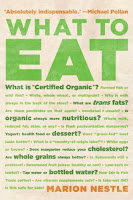The cereal aisle can be overwhelming whether you are looking for a spouse or just breakfast. Stacks of brightly colored boxes grab your attention from every angle. Whatever it is that makes our final decision before placing the box in our grocery cart, it is time to make that an informed decision. There are many aspects to consider when picking your cereal; besides taste, it is important to look at the ingredients and the nutrition label. Try to avoid being convinced of health claims such as, "Can help lower cholesterol," "lose 10 pounds by replacing one meal a day with a bowl of cereal," or "made with whole grains." Health claims in general can be misleading and manufacturers are mostly just trying to sell their cereal.
Instead, turn the box around and focus on mainly two things: fiber and sugar. Cereal should have less than 8 grams of sugar per serving (which vary considerably from brand to brand and type to type) and should not be listed as one of the first three ingredients. Ingredients are listed in descending order by weight. Sugar may be disguised as corn syrup, honey, high fructose corn syrup, fruit juice, dextrose, fructose, or other words ending in -ose. Sugar can be found listed under total carbohydrates, which are also of importance if you are counting carbs (for weight loss or blood sugar control).
Also listed under total carbohydrates is fiber. Now I have often been teased for my interest in fiber (I admit it is listed as a hobby of mine on Facebook) but I can not emphasize the importance of fiber enough when it comes to cereal. Cereal can be an excellent source of fiber and since we need 25 to 30 grams of fiber per day (depending on overall calorie needs), breakfast is a great time to start gettin' it in. Also, if a cereal is high in fiber, it is most likely made from whole grains. Whole grains to look for might include whole oats, barley, rye, buckwheat, amaranth, corn, and anything followed by the word "bran." Fiber will (1) keep blood sugars regular by slowing the digestion of carbohydrates to sugar down, (2) keep "everything else" regular by creating bulk from indigestible material, and (3) keep us full longer by the above mechanisms. Search for a cereal with at least 5 grams fiber per serving.
To give you some direction, the Center for Science in the Public Interest has rated a plethora of cereals based on their nutritional value as well as taste. If you have never read their reviews, written bi-monthly in the Nutrition Action Healthletter, you are surely missing out. Although a bit outdated (April 2006) considering their are new cereals offered all the time, this should give you a good start, get you oriented to the cereal aisle, and help you meet NAN. In summary, their top picks include:
- General Mills Fiber One Honey Clusters (a uber-fibered version of Honey Bunches of Oats)
- Kashi Good Friends (Kashi in general does pretty well when it comes to whole grains but double check ingredients, such as in Go Lean varieties, for soy protein isolates).
- Post Spoon Size Shredded Wheat 'n Bran
- Weetabix Organic Crispy Flakes & Fiber
- Kellogg's All Bran, Bran Buds and Original
- Post 100% Bran (Try adding your own sweetness with Truvia, an herbal sweetener without calories and chemical drawbacks).



